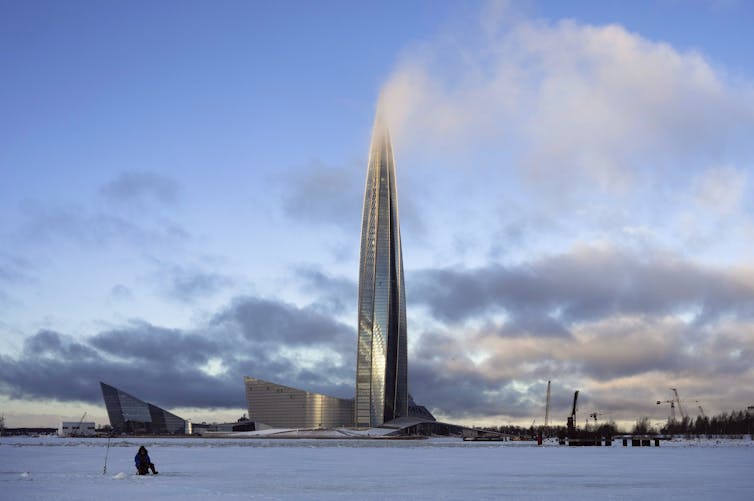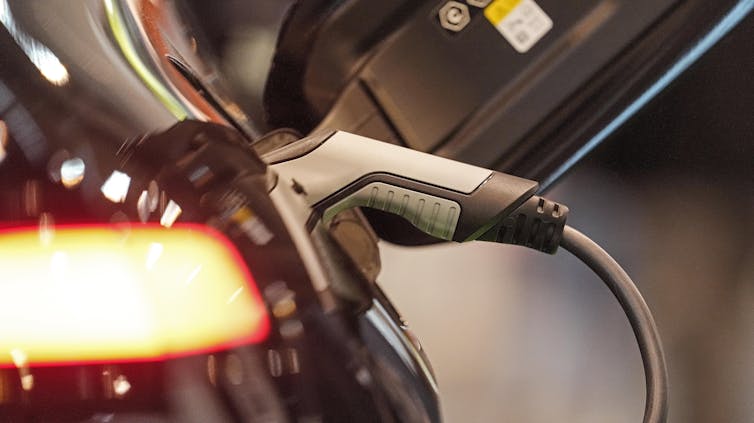
Canadians are finally returning to the office after two years of pandemic restrictions, and they’re are making March Break and summer travel plans. They are also being confronted by record-high gasoline prices at the pumps, leaving them wondering: Why is gasoline so expensive? How long will they stay this way? What can be done?
There are obvious and not-so-obvious answers to these difficult questions. The key driver of gasoline prices is the price of a barrel of oil and, like other commodities, oil prices are driven by the dynamics of supply and demand. Right now, supply is very tight.
During the pandemic, oil use plummeted and then slowly recovered. It is only now reaching pre-pandemic levels. In response to that demand plunge, companies mothballed new exploration projects and reduced the production of current ones, cutting supply drastically.
As economic recovery began, companies could not easily ramp up production. Yet prices remained low for most of that period. Moreover, oil wells are not water faucets: they take time to increase production. They also need the money and social license to do so, and both have been lacking of late.
The recent history of oil production
One problem is the increasing political risk of boosting production. Over the past several years, most governments have placed large policy emphasis on addressing the problem of climate change. Central to their efforts are reducing oil use and production and making continued use more expensive. This raises the required return on investment projects, making some new sources uneconomic.
Second, banks, equity investors and other capital providers have become less willing to fund oil and gas projects. They increasingly insist on improved environmental, social and governance performance (ESG) from the companies they invest in.
Some abstain from the oil and gas sector completely: no matter how well an oil company scores on the S and the G categories of ESG, they often score poorly on the E because of the nature of the industry. Consequently, capital acquisition is hard.
Read more: Sustainability rankings don't always identify sustainable companies
Third, regulatory risk — the risk that a regulation change will alter an industry — inhibits more oil and gas investment. Canada’s continuous saga of pipeline development is a case in point. Presidents Obama, Trump and Biden have each reversed their predecessor’s position on the Keystone pipeline.
Other pipeline and oil and gas projects in Canada have been delayed or made more expensive by protracted negotiations, more rigorous environmental reviews and political obstacles.
Regulatory risk is also present internationally. In the United States, President Biden cancelled the Keystone pipeline and has outlawed new drilling leases on federal land. Norway’s Equinor has pledged to decrease its production of hydrocarbons. All of this has made increasing oil production difficult, and contributed to a supply crunch.
Geopolitics and gas prices
Adding to the supply crunch is the second component of high oil prices — a geopolitical crisis in a significant oil-producing area.
Russia is among the world’s top oil and gas producers, habitually ranking in the top three. It supplies Europe with 27 per cent of its oil and 40 per cent of its natural gas.

Many European countries remain dependent on oil and gas for heating, transport and industrial production, and the war in Ukraine has helped expose that reality.
The invasion has generated shock, fear, and outrage. Public condemnation has been almost universal. Economic sanctions on Russia have been powerful and announced with great fanfare. But the flow of Russian oil and gas has not yet stopped. Despite plans to accelerate cuts to fossil fuel use, Europe still needs oil and gas.
The invasion has brought an uncomfortable reality into bold relief. Efforts to reduce carbon consumption have strengthened the geopolitical hand of many oil producing countries.
Of the world’s top 10 oil producers, only three are democracies. They remain overwhelmingly dependent on oil and gas revenue and are unencumbered by political, regulatory and capital constraints.
The less oil other sources produce, the more they can produce, often at fear-induced elevated prices that generate a revenue bonanza.
What can be done?
What can be done to reduce prices and vulnerability? In the short term, a more diverse supply.
President Biden has released oil from the strategic petroleum reserves, repeatedly called on the OPEC cartel to increase production and is even making overtures to Venezuela.
These will help bring prices down. But these are hardly the measures you would want to base your energy security on.
Read more: How the war in Ukraine will shape Canada's energy policy — and climate change
Fortunately, there are promising signs of relief at the gas pump. The market will do its work — high gas prices will motivate more production, eventually bringing gas prices down.
Yet bubbling underneath will be the ongoing process of energy transition. As other energy sources grow in importance, calibrating the needed oil supply to demand will be even more difficult. Prices will come down, but they will be volatile: consumers should brace for unpredictable gas prices to become the norm.

The longer term answer acknowledges reality. The world will need oil and natural gas for decades yet. Alternative energy sources — wind, solar, more natural gas and nuclear — can reduce that dependence, but will not eliminate it — at least not for a decade or more. The problem of being dependent on oil and gas imports will remain, particularly for Europe.
Oil prices are cyclic, volatile and based on a combination of supply, demand and geopolitical forces. Winston Churchill famously noted that security in oil supply lay in variety, and variety alone. Extending his lesson, cultivating a variety of carbon and non-carbon energy sources is the best way to reduce price volatility and energy vulnerability. It is a lesson we are relearning now.
David Detomasi does not work for, consult, own shares in or receive funding from any company or organisation that would benefit from this article, and has disclosed no relevant affiliations beyond their academic appointment.
This article was originally published on The Conversation. Read the original article.







